INDUSTRIAL &
TERMINAL RAILROADS &
RAIL-MARINE OPERATIONS
OF BROOKLYN, QUEENS, STATEN
ISLAND, BRONX &
MANHATTAN:
| 207TH STREET
YARD INDEPENDENT SUBWAY / IND - EIGHTH AVENUE LINE / NEW YORK CITY TRANSIT AUTHORITY Inwood, Manhattan, NY |
 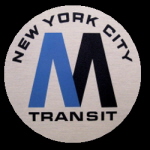 |
|
updated: |
||
|
|
||
|
update summary: |
date: | |
| #41 transfer to Kingston, NY |
31 August 2021 | |
.
.
Special Thanks
to:
Dave Pirmann of www.nycsubway.org for extensive
use of the images and information on that website,
to Tom Flagg for graciously adding his research to this webpage,
John Teichmoeller for providing his collection of images and information,
and to the Trolley Museum of New York for ownership information on Drill
Motor #41.
.
.

|
As this particular webpage deals with an active
railroad and company,
or any of their subsidiaries, holding companies
or parent organizations, employees or otherwise;
This website and the information contained
within has been compiled for the use of reference only, and any inaccuracies
are purely accidental. Also, this webste does not condone or authorize anyone not employed or affiliated with the above companies or agencies |
.
| History & Property | Float Bridge & Trackage | |
| Locomotive Overview & Photos |
|
Locomotive Roster builders data, previous owners & disposition info |
.
This page is kind of an oddball, as it pertains to the New York City Subway System of which I do not generally cover, but as the 207th Street Yard was the only facility of the New York City transit system to have been equipped with a float bridge, this page has been created to cover that history.
The 207th Street Yard is located in northern Manhattan along the Harlem River in the neighborhood of Inwood, bound by Tenth Avenue on the west, Harlem River on the east, West 215th Street on the north and West 207th Street on the south.
The yard was built between 1925 and 1930 by the Independent Subway as a storage and maintenance yard for the new Eighth Avenue Subway line, one of the first subways to be owned municipally and not by private interests.
The 207th Street Yard is still active and is now part of the Metropolitan Transportation Authority of New York. In its current form, the yard is comprised of approximately 16 city blocks (roughly 2 blocks in width by 8 block in length). The block size for this area on average is 199 feet in width by 500 feet in length, for a total of 1,592,000 square feet or roughly 36.54 acres for the land occupied by the yard and buildings.
.
From the early 1920's, Mayor John Hylan proposed the construction of New York City owned and operated rapid transit lines to compete with the Brooklyn Manhattan Transit (BMT) and Interborough Rapid Transit (IRT) rapid transit services. The BMT and IND were for the most part, privately or semi-privately owned.
So, in response to Mayor Hylan's proposal, New York Governor Nathan Miller secured legislation in 1921 to create an agency called the Transit Commission. The Commission came to develop a plan to reduce overcrowding on the subways. The original plans included:
Two major north - south trunk lines in midtown Manhattan, with one running under Eighth Avenue and one under Sixth Avenue. It is the formation and history of the Eighth Avenue Line that will apply to this webpage.
Construction on the Eighth Avenue line began April 3, 1925 and work proceeded slowly.
The following image is a composite of three plates (185, 188 and 190) from the 1930 G. W. Bromley Land Book of Manhattan. It shows the Independent Subway Line property outline (including bulkhead) and structures (with purposes) but not the trackwork. I noted the location of the float bridge and added the West 207th Street / University Heights Bridge for reference.
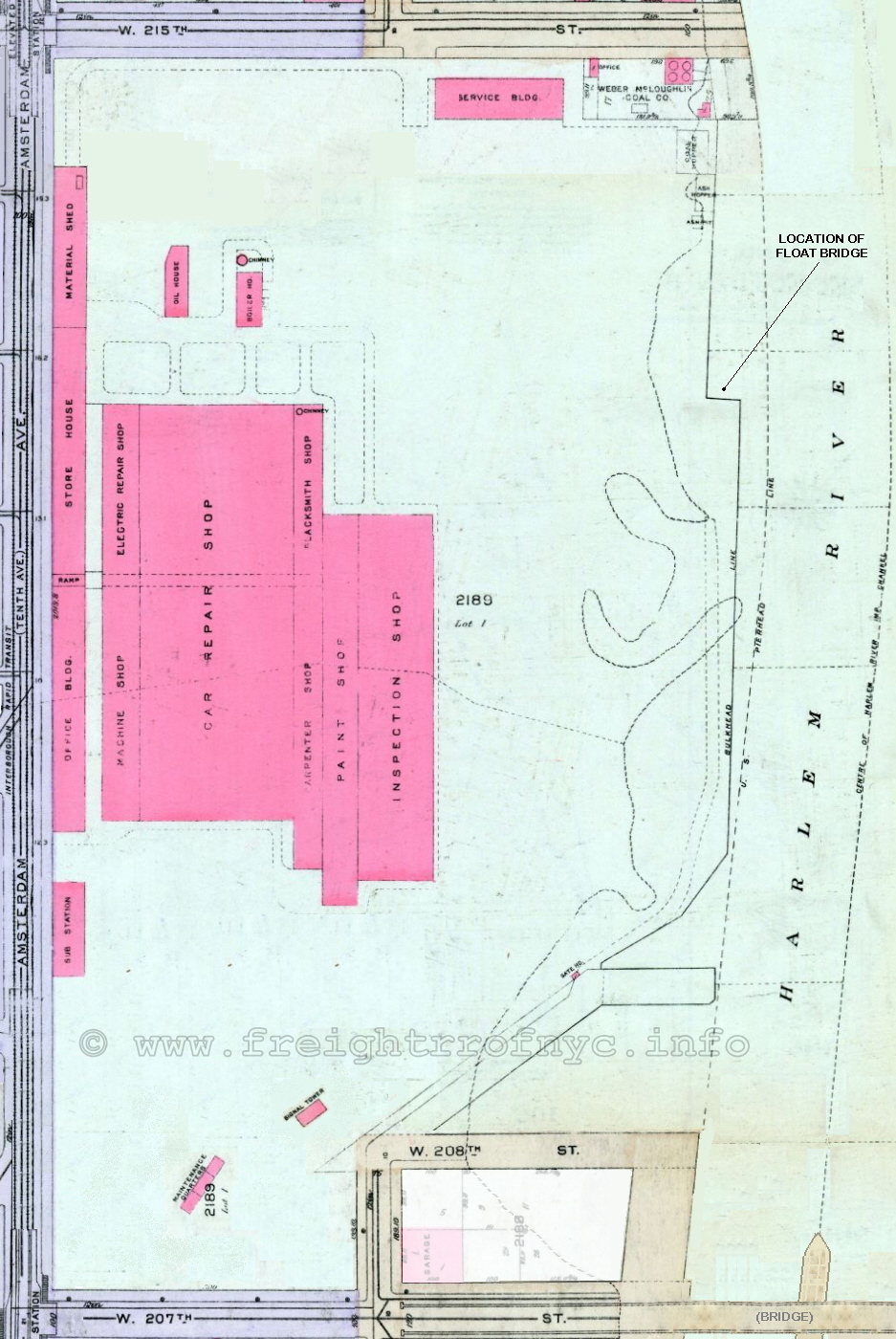
G. W. Bromley - 1930
Historic Map
Works
added 21 January 2010
Service on the Eighth Avenue Line was finally inaugurated on September 10, 1932, with the Eighth Avenue Line opening from 207th Street in the north to Hudson Terminal in the south.
Quick sidenote: The Hudson Terminal was located between Greenwich Street (on the west), Church Street (on the east), Cortlandt Street (on the south) and Fulton Street (on the north) where it met the Hudson & Manhattan tubes. The Hudson Terminal would be purchased by the Port Authority to construct the World Trade Center, The original Hudson Terminal station closed in 1971 upon the opening of the new PATH (Port Authority Trans Hudson) station which was was constructed at the bottom of the World Trade Center towers. And I'm sure we all know happened 30 years later on Tuesday, September 11th, 2001...
Returning to the history of the Eighth Avenue IND Line; with the unification of all three "divisions" (IND, BMT & IRT) on June 1, 1940, the entire system would come under the guidance of the City of New York Board of Transportation. In 1953, the Board of Transportation gave way to the New York City Transit Authority, and in 1968, the NYCTA was brought into the Metropolitan Transportation Authority, better known as the MTA.
In spite of the "unification", the Transit System still identified with its early heritage by calling it's divisions IND, IRT and BMT.
This would change (date uncertain) as well. The IRT is now known as the 'A' Division and the BMT and IND would be known as the 'B' Division. As IND and BMT cars are built to the same specifications, they are interchangeable between those lines. However, IRT lines were built on a slightly smaller scale, so IND and BMT cars cannot operate on IRT lines. Hence, the two different divisions.
IRT lines are also now denoted by their numerical route designator signs (1, 2, 3, etc), and IND and BMT are recognized by their lettered route designator signs (A, B, C, D, etc).
Ok, now that you got the five minute New York City subway history lesson, we will continue onto the reason for the creation of this page.
The 207th Street Yard, or as it is currently called within the MTA, the "207th Street Overhaul Shop" is still in operation, and is used to store subway trains not in service between rush hours, as well as for preparation of equipment for display for the Transit Museum, as well as maintenance, overhaul and repair of subway cars.
This yard was originally constructed to service the Eighth Avenue IND (Independent) Line but now it currently serves both the 'A' division (IRT - Interborough Rapid Transit) and 'B' Division (IND - Independent and BMT - Brooklyn Manhattan Transit). From this yard, all parts of the subway system can be accessed.
While the yard is still in service, the float bridge and overhead gantry were removed sometime after 1980 (exact date uncertain).
.
Float Bridge & Float
Bridge Lead Trackage
While information pertaining to the history of the Independent Lines is plentiful, information pertaining to their float bridge at 207th Street is scarce.
Something to be taken into consideration, is the fact that the IND / NYCTA 207th Street float bridge was "private". While most of the trunk line railroads in New York Harbor had online and offline terminals utilizing float bridges and providing carfloat service; only two known locations had float bridges which were privately owned: The IND / NYCTA 207th Street location and the Procter & Gamble Port Ivory float bridge. Both of these locations only saw traffic pertaining directly to their business, and did not see general inbound / outbound consignment freight from the various New York area trunk line railroads.
In preparation for the draft of this webpage, Tom Flagg noted:
"The marine delivery would have been done by tugs from the railroad that loaded the carfloat, as normal (if there were a track connection, a switching locomotive of that railroad would do the same thing); [but] the transit system would have had to hire tugs only when shipping out something, such as cars to be rebuilt, although even there if the cars were going by main line rail somewhere, the connecting railroad would again do the switching / carfloating."
So, this should explain the significance of this location having a "private" float bridge.
In searching the New York Public Library digital archives, I was fortunate to have located a 1924 Fairchild Aerial Survey Photo of the area. This can been seen in the left image below. Note there is no subway yard, or float bridge, or any definitive bulkhead line. Just a hap hazard assortment of waterfront industries, tidal marshes and docks.
The image below right however, is from 2008, and you can see from where Broadway (curving thoroughfare at upper left corners) left and Tenth Avenue meet that we are looking at the same exact area.
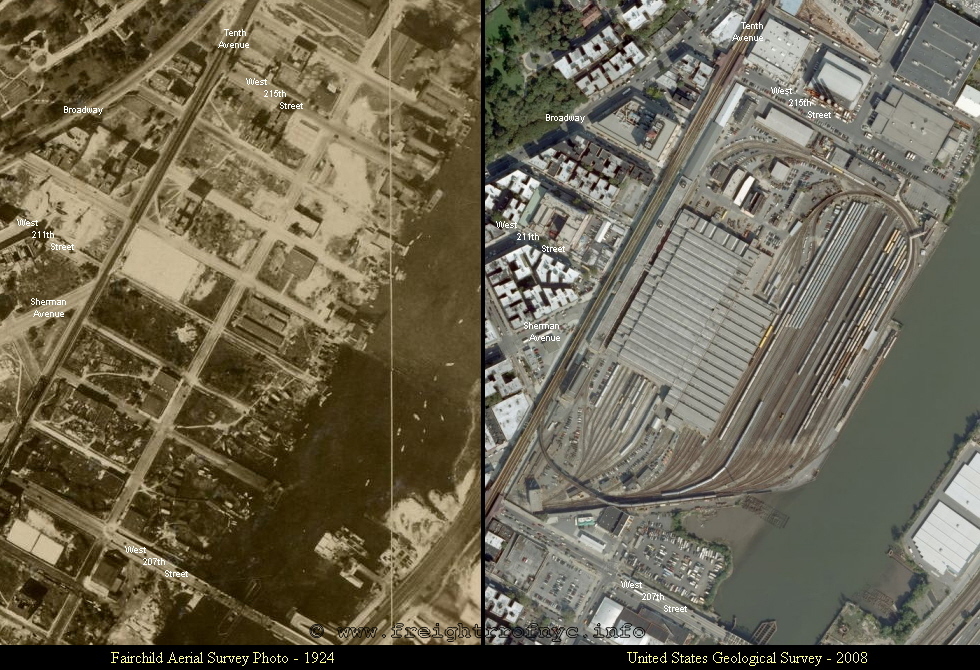
.
.
As construction began on the Eighth Avenue Line in 1925, I think it is a pretty good bet that the float bridge was installed about this time, and we know that the float bridge and yard was already constructed by 1930 to receive the first of the R1 subway cars. But the exact year that this float bridge was installed currently eludes discovery.
Trackage at this facility was and remains fairly extensive, which is to be expected for a typical subway yard. But, as we are only concerned with the float bridge, we are therefore only interested in the easternmost edge of the property along the Harlem River bulkhead.
Two tracks that ran along the bulkhead of the Harlem River. It is these tracks that were the float bridge leads and the float bridge was located at the north end of these tracks, and was a pony plate girder with overhead counterbalance structure, which can be seen in the two images below.
The first image, a wide angle; shows almost the entire complex looking west from the Bronx:

Independent Subway Line - 207th Street Yard, Repair
Shops & Float Bridge -1931
Looking west.
Wurtz Brothers photo
NYPL digital archives
added 20 January 2010
.
.
The next image, is zoomed in on the float bridge, gantry and finger / fender piers.
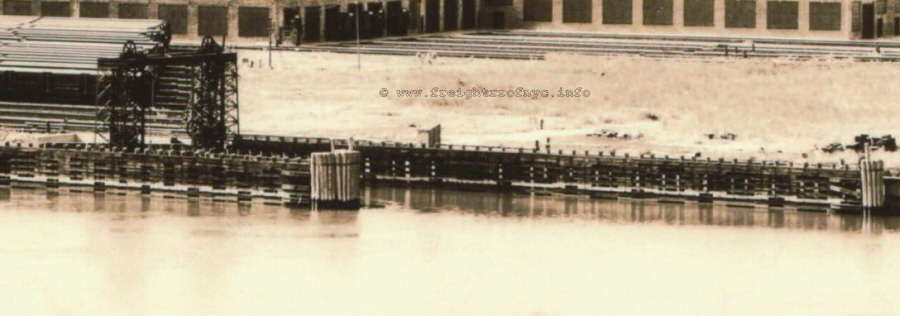
Independent Subway Line - 207th Street Yard float bridge
- 1931
Wurtz Brothers photo
NYPL digital archives
added 20 January 2010
.
.
The next image is from a copy negative by Tom Flagg. He has written the following on the back: "Kramer, 1990, p. 32, Independent Subway, Man. Harlem River DC 3-19-99-13".
So with that I am going to surmise Tom furnished the image to the author Frederick Kramer of that book "Building the Independent Subway" published by Quadrant Press 1990. The caption for this photo in the that book states:
"Although the floatbridge at the property was in place on February 24, 1930, it had not yet been connected to yard trackage. Subway car deliveries would be made here, but over the years, there would be little carload freight activity on the bridge because bulk deliveries of coal and sand were made by barge."
This photo, seen below; appears to have been taken at an early date by the structures seen in the background.
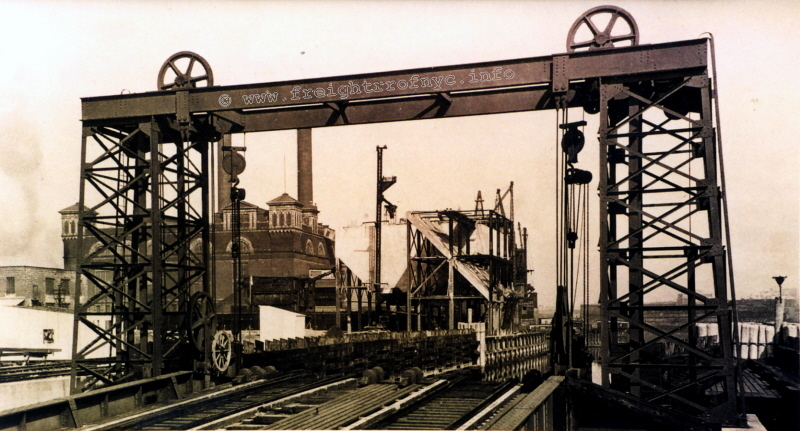
Independent Subway Line - 207th Street Yard float bridge
- unknown date
T. Flagg archives
via J. Teichmoeller
added 03 February 2010
.
.
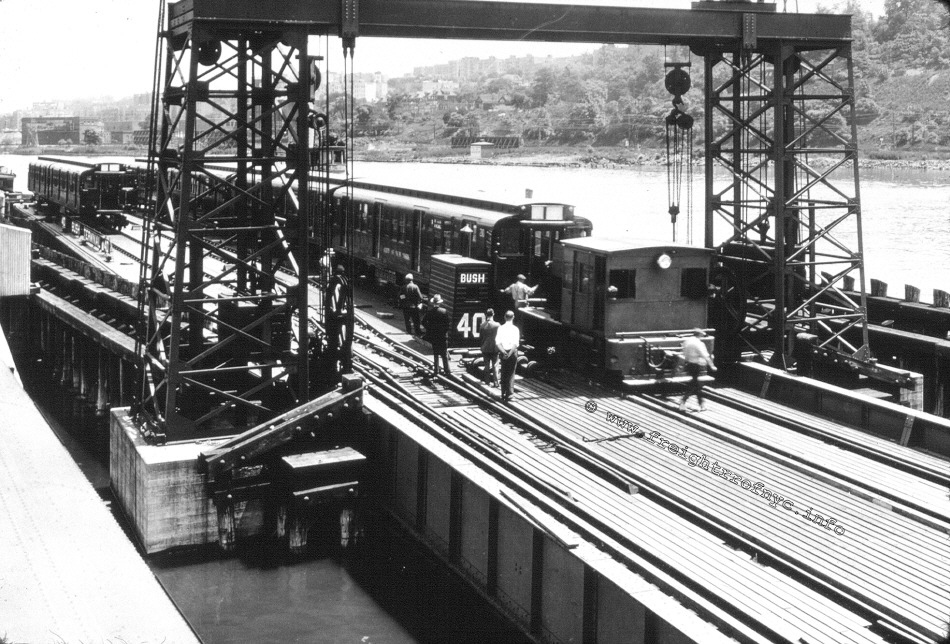
Independent Subway Line - 207th Street Yard float bridge
- August 1931
no # (Whitcomb 30T GM6)
E. Watson photo
slide from print
authors collection
added 01 December
2012
.
.
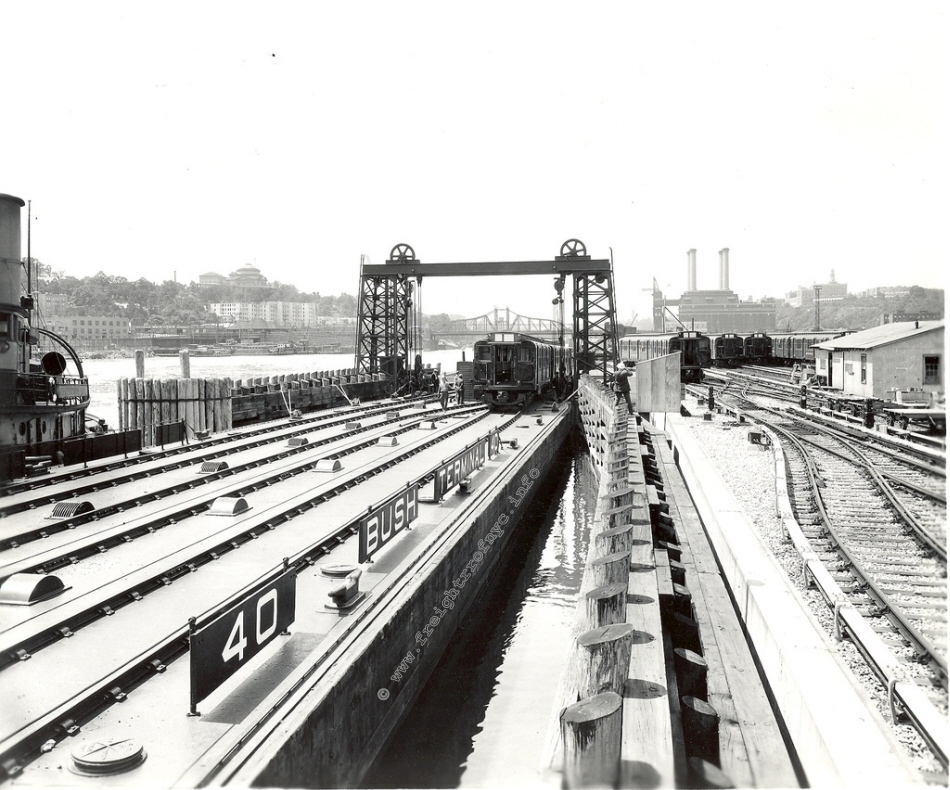
Independent Subway Line - 207th Street Yard float bridge
- August 1931
Judging from the like new appearance of Bush Terminal Carfloat #40, it is
clear the carfloat has not been in service long!
E. Watson photo
A. J. Lonto archives
added 01 December
2012
.
It should be noted that this float bridge was particularly odd as according to Paul Strubeck, it was shorter when compared to the other float bridges utilized by other railroads in New York and New Jersey area. The length of this float bridge was approximately 70 feet, in comparison to the other float bridges, which were 90 to 100 feet in length. Why this is, is unknown, and apparently judging from the length of the bulkhead, space was not an issue.
Now this float bridge would facilitate the transportation of subway cars both those incoming (new & refurbished) and outbound (obsolete and scrap).
What is so special about that? As I said at the beginning of the page, this was the only subway yard in New York City to have utilized a float bridge.
The following image, which was located within the digital archives of the Brooklyn Public Library; exemplifies the use of the float bridge in handling subway cars. Granted, the image below was taken at Bush Terminal in Brooklyn, but it is the photograph caption below that is of interest.
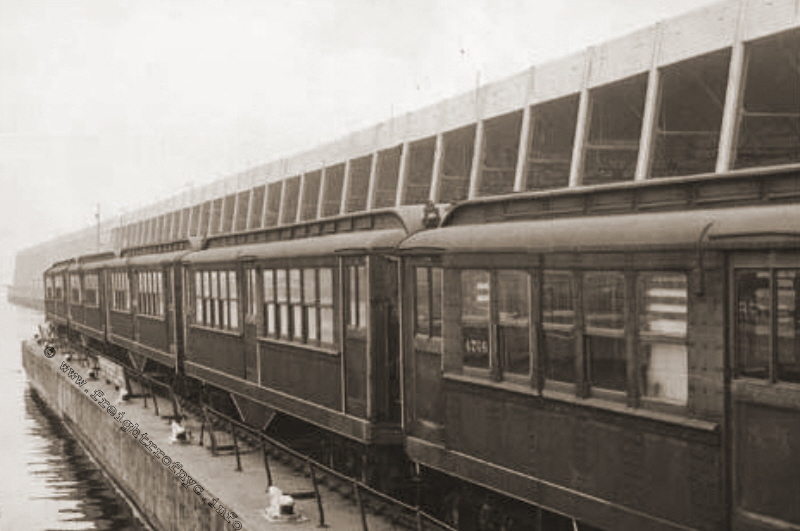
Bush Terminal 50th Street Floatbridge
- April 24, 1950
"Seagoing subway cars - Somewhat out of their natural element, cars being
transferred
from Queens IRT line to Bronx shops make detour through Brooklyn by way of
Bush Terminal dock."
Brooklyn Eagle Newspaper archives
Brooklyn Public Library
added 20 January 2010
.
.
Bush Terminal was an independent contract terminal that interchanged with the South Brooklyn Railway, which would haul subway cars for its parent organization, Brooklyn Rapid Transit; which in turn was absorbed by the Board of Transportation and in later years the NYCTA. You can read more about the South Brooklyn Railway here.
I had previously stated here, that these cars were destined for the float bridge at the 207th Street Yard. It was my assumption (and incorrect on my part) that if the subway cars were on a carfloat, the only transit facility with a float bridge was 207th Street. However, as Jim Boylan points out in a guestbook post: there is another, and more logical destination:
"The 1950 newspaper photo of the Interborough Rapid Transit subway cars from Queens, where the IRT had a line to Flushing, New York, may be correctly captioned when it says that the cars are to be floated from Bush Terminal as part of their journey to "the Bronx".
The IRT has a large repair shop at East 180th Street in the Bronx, which connected by the old New York, West Chester & Boston RR to the New York, New Haven & Hartford RR near East 174th Street in the Bronx. In 1950, the Bronx IRT shops at East 180th Street would be a more likely destination for IRT subway cars than the Manhattan IND shops at East 207th Street."
Taking Jim's post into consideration (and considering my lack of transit knowledge: IRT cars to an IND shop??? What was I thinking?); this carfloat in all likelihood is destined for the New York, New Haven & Hartford RR float bridges at Oak Point, Bronx and not the IND 207th Street float bridge. So hats off to Jim Boylan for pointing this out!
Returning to 207th Street; the track map seen below which is dated March 1, 1965; clearly shows the float bridge and finger piers, but note that the float bridge is marked abandoned.
Therefore, we must take this into consideration when we reference aerial photos on historicaerials.com (not shown here) that show the float bridge to be in place as late as 1980, but without tracks leading to it.
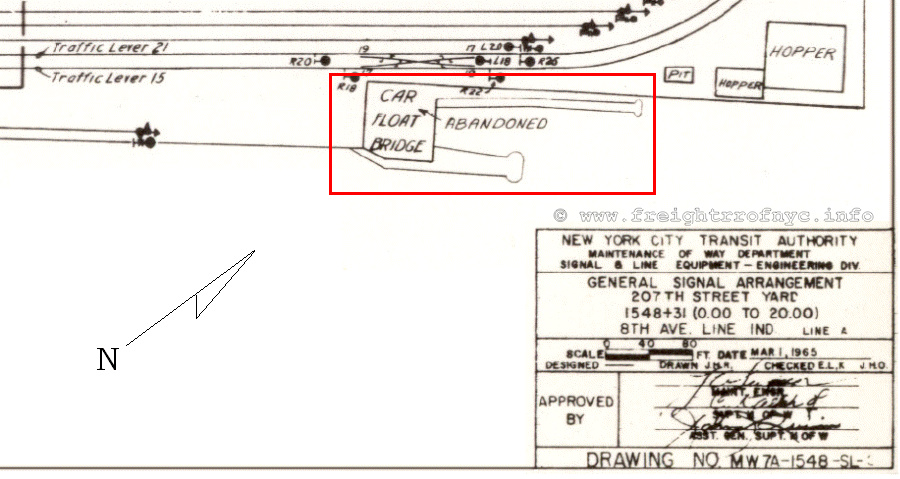
NYCTA 207th Street Yard Signal Arrangement Map
(showing float bridge) - March 1, 1965
nycsubway.org
archives
added 20 January 2010
.
Tom Flagg, who is always a source for great information, forwarded the following:
"That float bridge used a different design than the rest of the bridges in New York Harbor, which (as I explained in my series in Transfer) were of three different types. This one was not one of those, but instead was very similar to a design used in Baltimore, we don't know why.
According to John Teichmoeller (in a caption for a photo of the NYCTA float bridge in an issue of the Transfer) several new R-62 subway cars were lost when a carfloat capsized at this location, after being improperly loaded. Maybe this design of bridge wasn't the best, for subway cars."
.
John Teichmoeller had previously sent a copy of this image to another NY rail-marine afficianado; who provided that information about the capsize event. Unfortunately, I have not been able to locate or or confirm the original source (newspaper articles, NYC subway buffs, etc) of this apocryphal subway car mishap.
In any case, this last part is interesting in itself, as it appears the float bridge must have been reactivated to receive that delivery of R62's. As the R62's were built and delivered from 1983 through 1987, it should be noted that the R62 contract was split into two orders: R62 were built by Kawasaki from 1983 to 1985 and the R62A by Bombardier from 1984 to 1987. Nevertheless, the float bridge would have had to be in place for either or both of those deliveries during the respective years shown.
As I have pointed out to John Teichmoeller and Tom Flagg, the design of the float bridge is quite odd (and not quite conducive of a normal float bridge installation). I refer to the bulkhead anchor end, which is sitting in several inches of water, while the carfloat end is out of the water.
But also note the bleach and moss stains on the surrounding wood pilings. Clearly the height of the water is not a storm surge or even a high tide! So why was the bulkhead anchor end of the float bridge designed to sit in the water? Or has the bulkhead anchor collapsed? No one seems to have an answer. But as you can plainly see, the bottom of plate girder is suffering from the effects of severe corrosion.
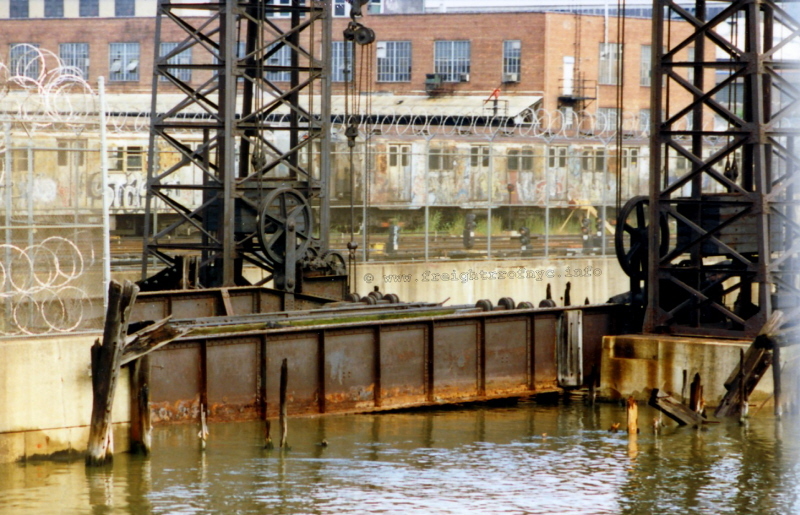
NYCTA 207th Street float bridge - unknown date
Looking north.
P. Chiavetta photo
courtesy N. Kalis
J. Teichmoeller collection
via T. Flagg
added 23 January 2010
.
.
At the least, with this latest bit of information; we are able to move up the date when the 207th Street float bridge was removed to at least until after 1987.
The following aerial photos are the most recent available (2008) via open source and are representative of the current configuration of the location.
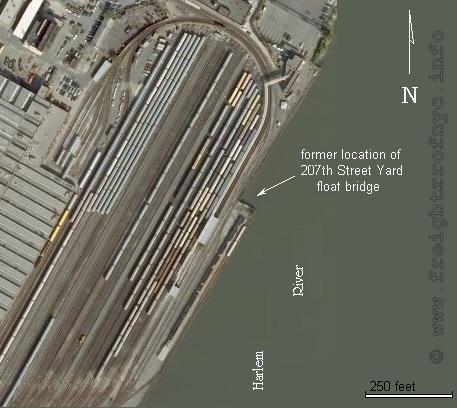
NYCTA 207th Street Yard - 2008
United States Geological
Survey
added 20 January 2009
.
.

NYCTA 207th Street Yard - 2008
United States Geological
Survey
added 20 January 2009
.
Two locomotives are known to have specifically been used to load or unload subways cars via the float bridge at this facility. Naturally, any work locomotive or other powered equipment (subway car, etc) on the IND or subsequently the NYCTA rosters would be capable of doing this, but it appears from these photos that the 207th Street Yard had work locomotives dedicated to working the float bridge.
The first known locomotive to be used here was a 6 wheel Whitcomb 30 Ton Gas Mechanical (30T GM6). From what I have been able to learn about this locomotive it was built in 1930. Referencing several photos, it does not appear that this locomotive was assigned a road number.
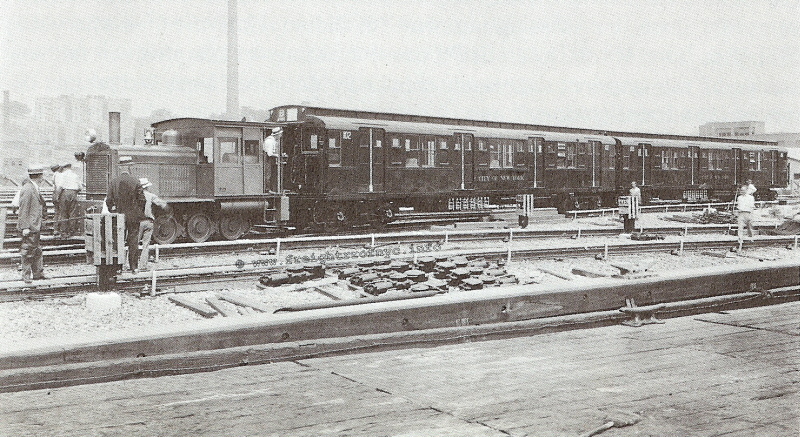
no # (Whitcomb 30T GM6) - July 1930
New R1s from the American Car Foundry plant in Berwick, PA. These cars were
delivered to Hoboken, NJ;
and then shipped via carfloat to the 207th Street yard. The first 10 cars
arrived in July 1930, with 40 cars arriving each month.
A total of 300 cars were ordered which correlates to 30 deliveries @ 10 cars
per carfloat.
Once cars arrived at the 207th Street Shops, motors and other electrical
equipment would be installed.
unknown photographer
NYCTA archives
added 20 January 2010
.
.
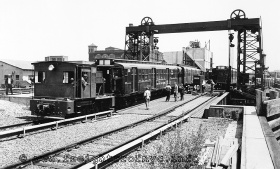
no # (Whitcomb 30T GM6) - July 1930?
A. J. Lonto
photo
added 20 January 2010
.
.
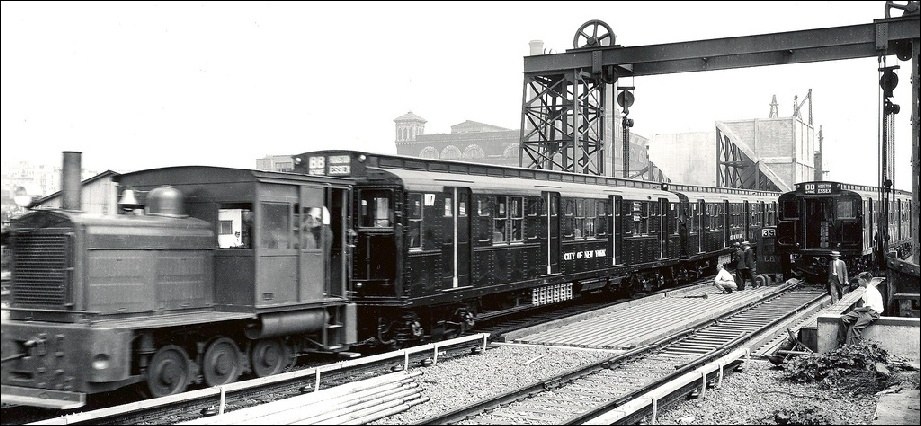
no # (Whitcomb 30T GM6) - July 1930?
Ed Watson photo
A. J. Lonto collection
added 15 September 2025
After being sold by the IND, sale of this locomotive was brokered by R. C. Stanhope, a locomotive and railroad equipment dealer quartered in New York City, and was sold first to a construction firm, and then at several refineries.
Fortunately, this locomotive still survives to this day, and still pretty much "as built" (it appears the bell and headlight were changed and the stack cut down slightly). This locomotive can be now be seen in the Great Plains Transportation Museum located in Wichita, KS:
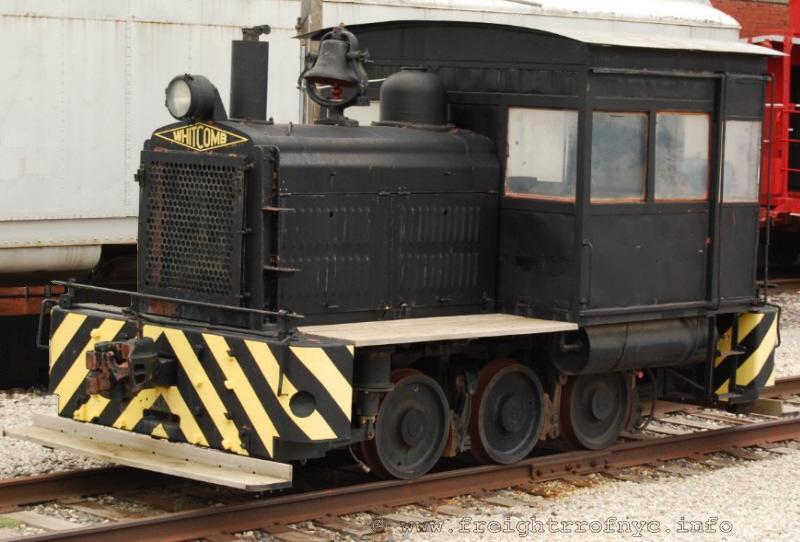
Great Plains Transport Museum, Wichita, KS - 2009
N. Henderson photo
North East Rails photo archives
added 21 January 2010
.
.
The second locomotive used at the 207th Street float bridge, would more correctly be referred to as a "work motor", as it was electrically powered via the third rail. This locomotive is also referred to as a "drill motor".
The following information is courtesy of the Trolley Museum of New York:
"Two were originally built by Magor Car Builders in 1930 for the IND 207th St. Shop. Equipped with Westinghouse control switches and trolley car high voltage type controller with dead man feature, they were numbered 41 and 42.
The Drill Motors were originally equipped with large spring loaded high voltage cable reels, mounted on the deck at the end of the car. The wire had a special clamp on the end which connected with the 3rd rail. This maintained 600 volt power to the Drill Motor allowing it to move off the 3rd rail and into the shop to couple up to the dead cars. The cars were then pulled out on to the 3rd rail. As the Drill Motor moved out, the cable would automatically wind up on the reel.
In 1948 the reels were removed for safety reasons and the Drill Motors were assigned to yard switching. They would make up refuse trains that were used nightly to pick up refuse from each station on the line.
The two large boxes mounted on the platform over the motor truck are filled with sand and scrap metal and were so placed to add weight and give the Drill Motor more tractive effort.
#41 and sister #42 worked the garbage collection trains on the IND system and were later used as yard switchers. #42 was involved a collision in 1948 and was placed in storage until 1955 at 207th St Yard, at which time it was scrapped."
Authors note: I have come across both 1930 (TMNY) and 1932 (www.nycsubway.org) build dates for these motors. Which is correct in unknown.
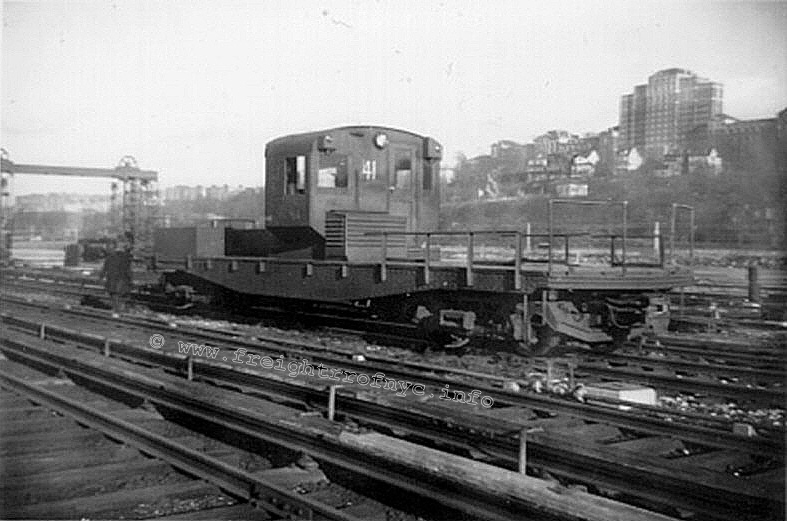
#41 - December 6, 1947 - 207th Street Yard, Manhattan,
NY
Note float bridge gantry to left of locomotive.
unknown photographer
B. Russell collection
added 20 January 2010
.
.
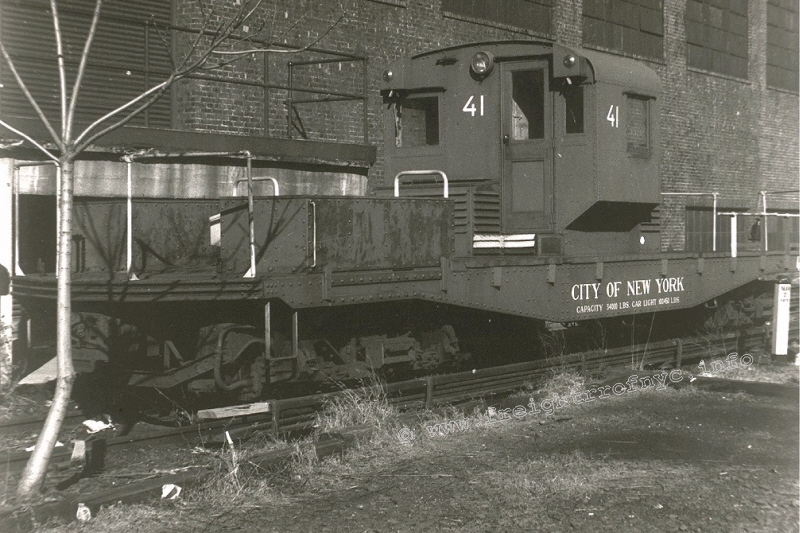
#41 - unknown date - 207th Street Yard, Manhattan,
NY
unknown photographer
J. Testagrose collection
nycsubway.org archives
added 20 January 2010
.
.
#41, would be renumbered 20010 in February 1962, (but evidently would wear it's original number 41 as well, as witnessed by the image below).
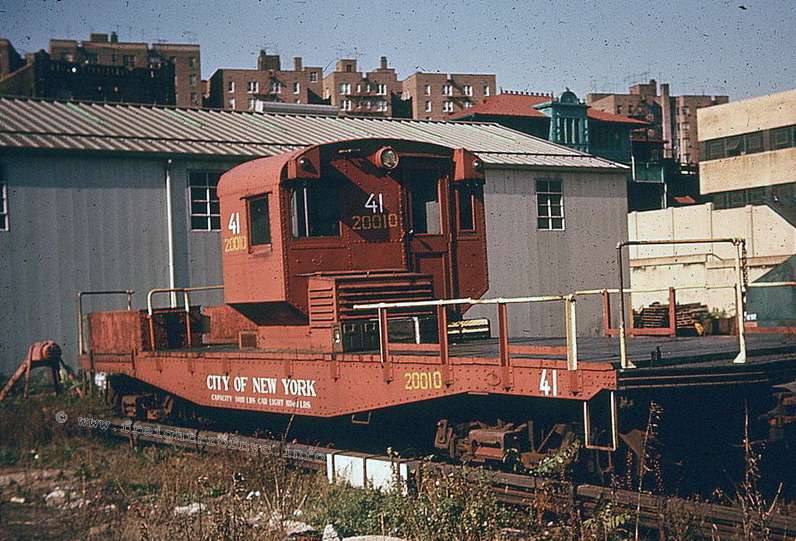
#41 / 20010 - October 1962 - 207th Street Yard, Manhattan,
NY
J. Shanus photo
nycsubway.org archives
added 20 January 2010
.
According www.nycsubway.org; #41 would be sold to the Trolley Museum of New York (TMNY) located in Kingston, NY in 1978, and this work motor would appear on the Trolley Museum of New York roster even though it is still located at Coney Island Yard. The website of the Trolley Museum of New York states that is on loan to the Transit Museum.
As I compose this text, I check the TMNY roster, and #41 does not appear on the site. However, according to their site, they are in possession of "number 01, then 20011, this was the first flat car built for the IND subway. An electric crane which was installed in 1932 was removed in 1955."
Considering the fact that this drill motor is in fact in the Coney Island Shops and not listed on TMNY website, either the TMNY relinquished 41 to the NYCTA or there was some minor confusion over which unit was in their possession.
The following was posted by Evan Jennings (member and past president of TMNY):
Posted: Monday, October 20, 2008 10:08 am
Post subject: Roster updates--car 41 sold
"This month, IND Drill Motor No. 41 was sold to Railway Preservation Corp. in Coney Island. This car remained in New York City after its acquisition in 1978. It was first on loan to the New York Transit Museum and then was under the care of the Railway Preservation Corp. in recent years."
I've since contacted Dave Pirmann to update the www.nycsubway.org website.

#41 / 20010 - unknown date (2007 or 2008) - Coney Island Shops
P. F. Strubeck photo
added 20 January 2010
IND / NYCTA 207th Street Yard
Roster
(locomotives known to specifically been used to "work" the float
bridge)
| number / name |
builder |
c/n |
build date |
gauge |
wheel arrangement |
model | wheel dia |
acquired |
disposition |
notes |
ref |
| Whitcomb | 13046 | 1930 | std. | C | 30 Ton GM6 |
new | sale unknown date brokered by RC Stanhope, NY, NY (broker / dealer) sold: Utah Construction / Morrison-Knudsen; Boise, ID sold: Texas Oil Co (Texaco), Claymont, DE sold: Socony Vacuum Co.; Augusta, KS name change 1955: Mobil Oil, Augusta, KS to & currently at the Great Plains Transportation Museum, Wichita, KS |
[a] | [16] | ||
| 41 / 20010 |
Magor | 1932 | std. | B-B | new | renumbered 1962: #20010 transferred 1968: to New York City Transit Authority sold 1978: Trolley Museum of New York, Kingston, NY; sold 2008: Railway Preservation Corp. 8/1/2021: transported to Trolley Museum of New York; Kingston, NY |
[b] [c] |
[45] |
.
Locomotive Footnotes
| [a] | Unfortunately, Whitcomb builders records
in my possession did not reflect an entry for Independent Subway, City of
New York, Transit or anything similar. However, the North East Rails website shows an identical locomotive, noted to have beed used at NYC "IRT" subway. This is believed to be this locomotive. Also according to the info listed for this locomotive on the North East Rails website, this locomotive changed hands several times. Dates of sale unrecorded:
|
|||
| [b] | stayed in Brooklyn, NY at Coney Island Shops, until 8/1/2021 at which time it was transported to Kingston, NY | |||
| [c] | stored at NYCTA Coney Island Shops & Yard. |
.
Like what you see? Suggestions?
Comments?
.
As this particular webpage deals with an active
railroad, viewers should be aware that:
this webpage or the author is not affiliated with:
.
the New York City Transit Authority,
Metropolitan Transit Authority,
or the City of New York;
.
or any of their subsidieries, holding companies or parent organizations,
employees or otherwise;
and no affliation or connection with those companies or municipalities is
suggested or implied.
This website and the information contained
within has been compiled for the use of reference only, and any inaccuracies
are purely accidental.
This webpage sees revision for the purpose of the addition of information,
or correction of inaccurate data.
Suggestions or corrections should be sent directly
to:
bedt14@aol.com
.